US Congress gives the green light to Australian submarine officers training on US nuclear boats
Australian submarine officers will be able to train on US nuclear-powered boats after Congress green-lit the first AUKUS law.
National
Don't miss out on the headlines from National. Followed categories will be added to My News.
Australian submarine officers have been given the green light to train on American nuclear-powered boats in the first AUKUS law ticked off by the US Congress.
US politicians have also opened the door to leasing nuclear submarines to Australia – or even providing access to the Air Force’s futuristic B-21 stealth bomber – as part of a mammoth $1.2 trillion defence spending package.
The bipartisan 4408-page bill also includes $382m to upgrade Darwin’s RAAF Base, as the American and Australian governments finalise the details of an expanded US military presence down under.
The bill – which passed the House of Representatives and will soon be approved by the Senate – requires US Defence Secretary Lloyd Austin to order an independent assessment before the end of next year on the challenges of implementing the AUKUS pact.
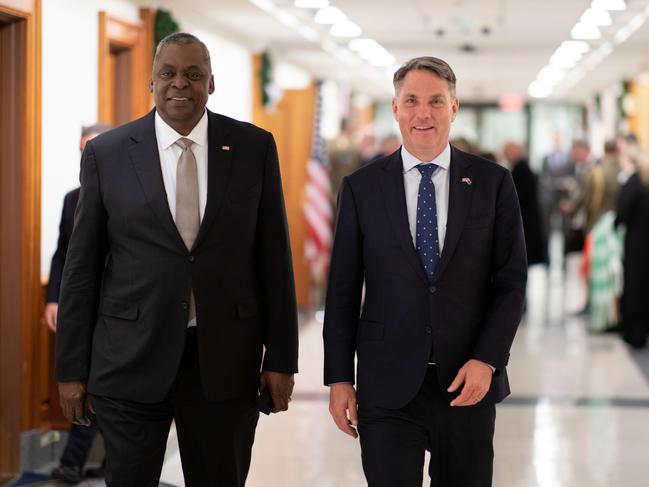
This would cover issues including personnel and resourcing, information sharing, security protocols and export controls.
Politicians also called for the assessment of “alternatives that would significantly accelerate Australia’s national security”, such as leasing or handing over “legacy” US submarines, or “the conveyance of B-21 bombers”.
Australian Defence Minister Richard Marles, who was in Washington DC this week for talks with Mr Austin, described the B-21 as a “cool looking aircraft” but said acquiring it was not on the radar.
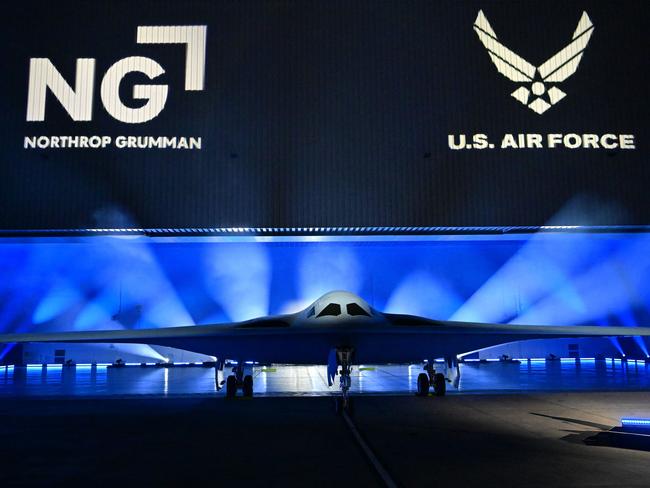
“We should just remember that literally the Americans have just announced it themselves and are getting it operational, so there’s no conversations about B-21s,” he said.
The submarine training program was developed by the bipartisan AUKUS working group led by Democratic Congressman Joe Courtney, who said it would “help ensure that Royal Australian Navy officers are ready to pilot these world-beating submarines expertly upon arrival”.
News Corp revealed earlier this month that five Australian Navy officers had already joined the US Navy’s world-leading onshore nuclear propulsion training program in South Carolina.
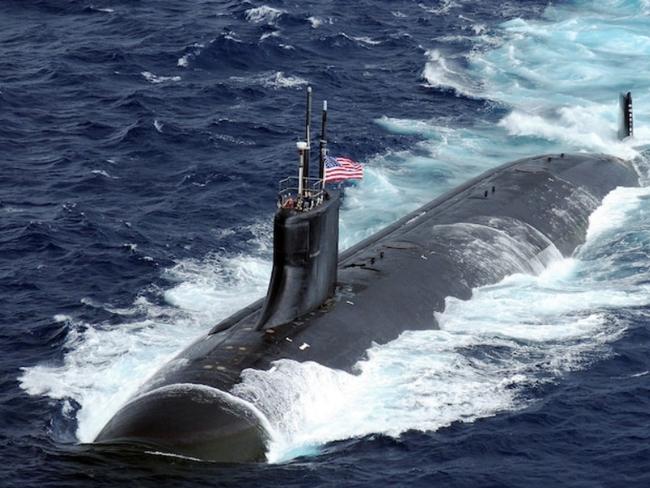
Republican Congressman Blake Moore said: “This is just the beginning of a new era in global maritime defence co-operation. My colleagues and I look forward to continue fostering this critical alliance in defence of the rules based international order and freedom across our nations.”
President Joe Biden’s signature is required to lock in the $1.2 trillion package, which also scrapped the Covid vaccine mandate for the military and featured up to $14.7bn in security assistance and fast-tracked weapons for Taiwan.
‘ABSURD’: US LAWS GIVING CHINA UPPER HAND
Four former US ambassadors to Australia have blasted their country’s “absurd” restrictions on sharing military technology, warning the AUKUS pact will fail without urgent action.
In an extraordinary statement, the ambassadors declared US arms trafficking regulations were “the most significant obstacle” to winning the strategic competition with China, putting national security at risk and handing an advantage to America’s enemies.
They said even an act as simple as transferring bolts for US-made aircraft flown by Australian forces already faced months of delays because of red tape.
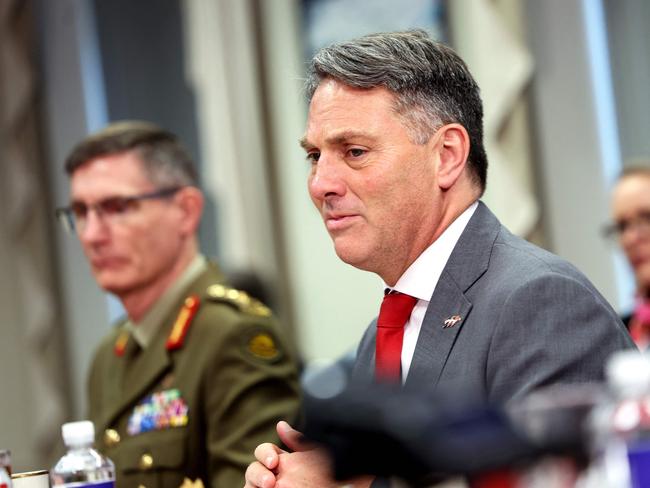
The issue was a key focus for Australian Defence Minister Richard Marles in his talks this week with US Defence Secretary Lloyd Austin, although their joint statement made only a vague reference to “strengthening efforts to better streamline and facilitate technology transfer and information sharing”.
Mr Marles, speaking in Washington DC on Thursday (AEST), said he was confident the Biden administration would take action to streamline the defence industrial base between the two nations.
“There is a unanimity of purpose in wanting to create a seamless environment … where information and technology can be shared much more freely,” he said.
“I take encouragement out of the last couple of days in what has been said to us that we will see movement here.”
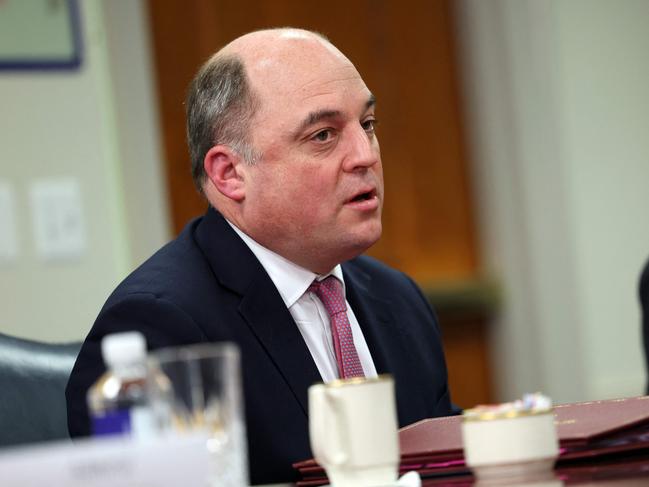
But the four ambassadors – Thomas Schieffer, Jeffrey Bleich, John Berry and Arthur Culvahouse – intervened after the AUSMIN meeting to declare the “outdated” US laws were “unintentionally handing a technological and military advantage to adversaries”.
The statement, released by the Center of Strategic and International Studies, was also signed by its senior adviser James Carouso who was the US chargé d’affaires to Australia.

They said AUKUS could not “achieve its ambitious goals of sharing and co-developing critical and emerging technologies” – including nuclear submarines, hypersonic missiles and autonomous systems – without changes to the regulations.
“The United States and Australia share intelligence under the Five Eyes partnership. Their soldiers have fought alongside each other in every major conflict since 1918, and an Australian is deputy commander of the US Army Pacific,” they said.
“The idea that they can share so much but they need to go through protracted bureaucratic analysis to sell Australia the matériel it needs to defend itself and help US forces in this time of heightened tension and competition is not only absurd on its face – more concerning, it gives China more time to make more relative gains.”
It came as Mr Marles took part in the first meeting of AUKUS defence ministers with Mr Austin and UK Defence Secretary Ben Wallace.
He said they agreed the optimal pathway for Australia’s nuclear submarines was “crystallising”, although he refused to reveal any details about how it would work.
Mr Wallace said the AUKUS partners were on track to be “ready and match fit for the end of the decade, to defend our values should they be put under threat”.
NEW BATTLE PLAN FOR US TROOPS IN AUSTRALIA
Munitions and fuel will be pre-positioned in northern Australia and defence bases will be upgraded to support a major expansion of American land, air and sea forces Down Under.
Japan will also be invited to participate in joint military exercises for the first time as Australia and the United States ramp up efforts to counter Chinese aggressionin the Indo-Pacific.
And in a major boost for the Albanese government’s plans to fast-track the acquisition of nuclear-powered submarines, the Biden administration declared it would step up to make sure there were no gaps in Australia’s deep sea defences.
The sweeping agenda to deepen defence and diplomatic co-operation was unveiled in Washington DC after the annual AUSMIN talks between the defence and foreign affairs ministers from both countries.
Ahead of a separate meeting of AUKUS defence ministers, US Defence Secretary Lloyd Austin promised to ensure Australia was not left high and dry when its existing submarines began to retire, and to deliver a nuclear fleet as quickly as possible.
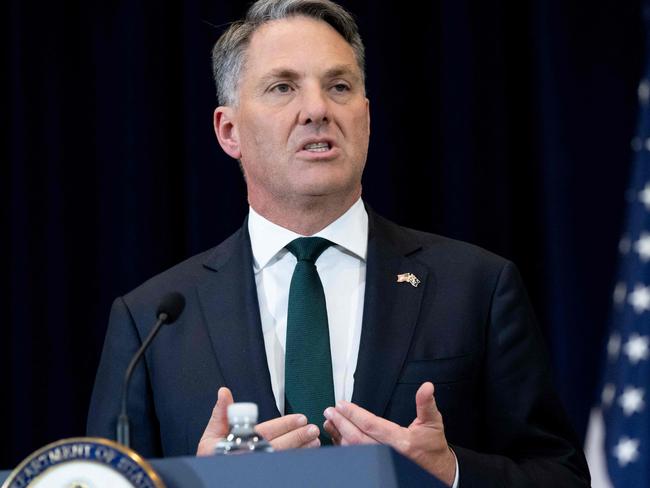
“We recognise where Australia is and when its capability begins to diminish, and of course we will address all of that in that pathway that we create,” he said.
“We will not allow Australia to have a capability gap going forward.”
Mr Austin hailed the bolstered US force posture down under, although he said the two countries were yet to determine details.
A joint statement released after the meeting said “priority locations” would be identified to upgrade runways, fuel infrastructure and storage for explosives, and that Australia would “expand locations” for military exercises involving US Army and Marine personnel.
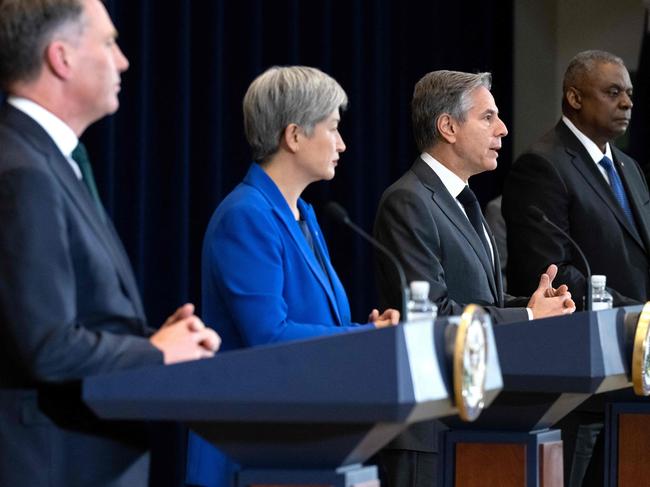
The Center for Strategic and International Studies’s Australia chair Charles Edel said the success of AUSMIN would depend on “how quickly they bring some of these sizeable commitments online”.
“This is all welcome, but the proof is in the pudding,” he said.
A key priority of the talks for Defence Minister Richard Marles was securing a commitment from the US to cut red tape that could otherwise put the brakes on plans to share defence technologies under the AUKUS pact.
He said he was confident the US was “making real steps forward” to break down barriers to a seamless defence industrial base.
US Secretary of State Antony Blinken vowed America would continue to stand with Australia in the face of the Chinese Communist Party’s coercion and intimidation, as Mr Austin called out China for threatening “regional peace and stability”.
Mr Marles and Foreign Affairs Minister Penny Wong will travel from Washington DC to Tokyo, where they will share the invitation for Japan to join Australian and US forces in military exercises.
‘AMBITIOUS’ AUS-US PLAN TO FIGHT CHINA
Earlier, Mr Marles visited America’s nuclear submarine production line ahead of crucial talks to finalise Australia’s plan to acquire its own nuclear-powered fleet.
Mr Marles toured the General Dynamics Electric Boat facility in Connecticut with Caroline Kennedy, the US ambassador to Australia, before meeting with Mr Austin at the Pentagon.
Kicking off the talks, Mr Austin said both countries were planning a series of “ambitious steps to further strengthen our unbreakable alliance”.
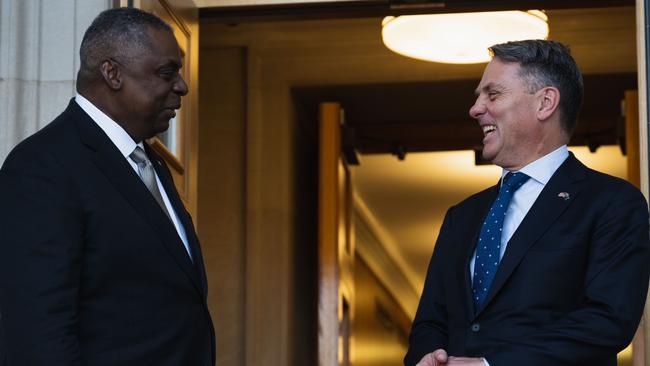
Mr Marles said his Electric Boat tour was a “fantastic experience” which highlighted “the sheer complexity of what’s involved in building a submarine”.
He said his Washington visit – along with Foreign Affairs Minister Penny Wong – came at a time where the world was “as complex and precarious as it’s been at any point really since the end of World War II”.
“We feel there is a very strong alignment between our two governments right now,” Mr Marles said.
“We are really looking forward to an ambitious agenda for AUSMIN … We think that this is a moment of real closeness and shared mission between Australia and the United States.”
Mr Austin agreed, saying the alliance was “as strong as it’s ever been and it remains vital to regional security”, especially in the face of the Chinese government’s “coercive and destabilising military activities”.
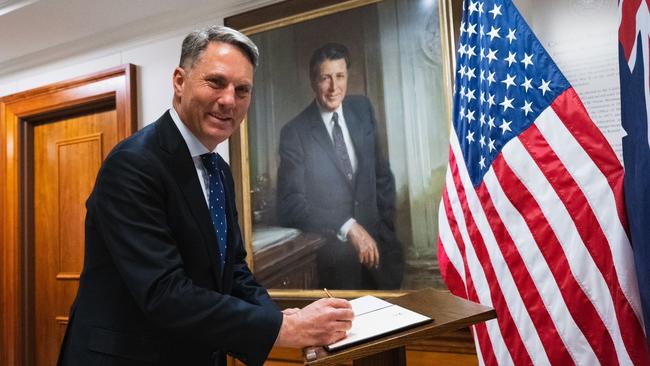
At the Pentagon, the pair discussed deepening co-operation on force posture, capabilities and defence industrial ties, as well as working more closely with Japan.
In an interview with News Corp prior to arriving in Washington, Mr Marles said he hoped to finalise the key planks of Australia’s submarine plan this week, before it is publicly unveiled early next year.
He indicated AUSMIN would also lead to an expanded US military presence in Australia, and that he was keen to see action on American red tape that could otherwise hamper defence industrial co-operation.
More Coverage
Originally published as US Congress gives the green light to Australian submarine officers training on US nuclear boats




